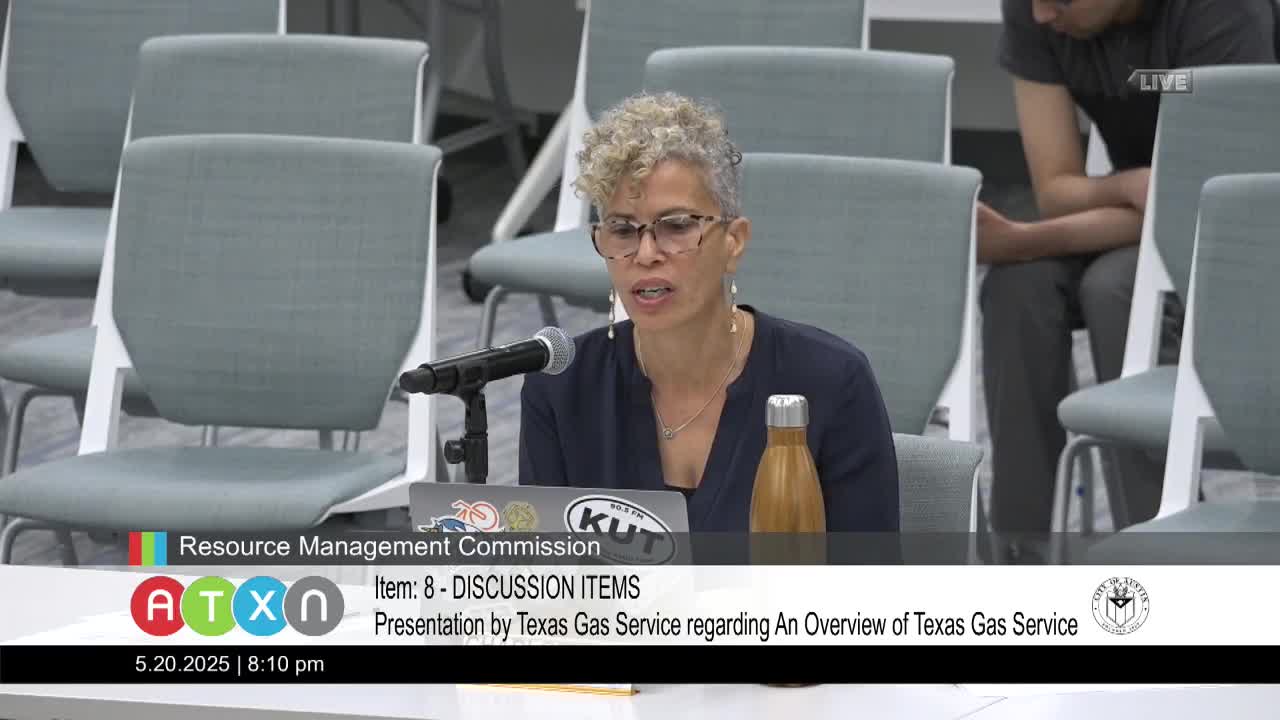Commissioner Robbins critiques Texas Gas Service rate increases and funding for low-income assistance
May 20, 2025 | Austin, Travis County, Texas
Thanks to Scribe from Workplace AI , all articles about Texas are free for you to enjoy throughout 2025!

This article was created by AI using a video recording of the meeting. It summarizes the key points discussed, but for full details and context, please refer to the video of the full meeting. Link to Full Meeting
Commissioners expressed alarm over the steep rate increases faced by major gas utilities in the region, with ATMOS reporting a staggering 162% increase over the past decade, Texas Gas Service at 117%, and CenterPoint at 90%. In contrast, the municipal gas utility in San Antonio has only seen a 7% increase, raising questions about the sustainability and fairness of current pricing structures.
A key point of contention was the lack of oversight by the Austin City Council regarding annual gas rate increases, known as GRIP (Gas Reliability Infrastructure Program). This mechanism allows gas companies to raise rates without direct input from local government, effectively sidelining community interests. The commissioners noted that while they can challenge these increases, such actions are rare and often ineffective.
The meeting also addressed the disparity in financial assistance provided to low-income residents. While Austin Energy and Austin Water contribute approximately $22 million annually to aid programs, Texas Gas Service's contribution stands at a mere $200,000. This stark contrast has raised concerns about the adequacy of support for vulnerable populations, especially in light of the ongoing financial burdens from surcharges related to Winter Storm Uri.
Looking ahead, the discussions underscored the need for a reevaluation of how utility costs are structured and managed in Austin. The commissioners emphasized the importance of advocating for more equitable practices that prioritize community welfare and ensure that all residents have access to affordable energy resources. As these conversations continue, the implications for Austin's residents remain significant, with potential changes on the horizon aimed at improving transparency and accountability in utility management.
Converted from Austin - Resource Management - May 20, 2025 meeting on May 20, 2025
Link to Full Meeting
Comments
View full meeting
This article is based on a recent meeting—watch the full video and explore the complete transcript for deeper insights into the discussion.
View full meeting